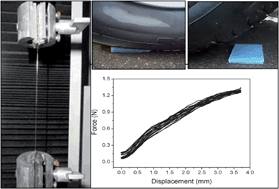The need for high strength hydrogels in load bearing applications has motivated an effort to improve the mechanical properties of these soft and wet materials. However, hydrogels with high strength, excellent elasticity and fatigue resistance are rarely reported. In this study, we fabricated hydrogels with excellent comprehensive mechanical performances by copolymerization of 2-vinyl-4,6-diamino-1,3,5-triazine (VDT) and chain length modulable polyethylene glycol diacrylates (PEGDA). The intermolecular hydrogen bonding effects from diaminotriazine were shown to increase both the tensile and compressive strengths of the gels up to MPa levels, and longer PEG chains could increase the gel's elongation to over 700%. The stress-softening phenomenon did not appear until the VDT content in all the hydrogels was above 50 wt%. PEG35K-PVDT gel containing 93 wt% water was able to resist car pressing and retain excellent fatigue resistance during 20 000 cycles of compression due to hydrogen bonding reinforcing effect and effective energy dissipation of flexible polyethylene glycol chains. These high strength and elastic hydrogels with antifatigue ability may serve as soft tissue engineering scaffolds.

You have access to this article
 Please wait while we load your content...
Something went wrong. Try again?
Please wait while we load your content...
Something went wrong. Try again?


 Please wait while we load your content...
Please wait while we load your content...